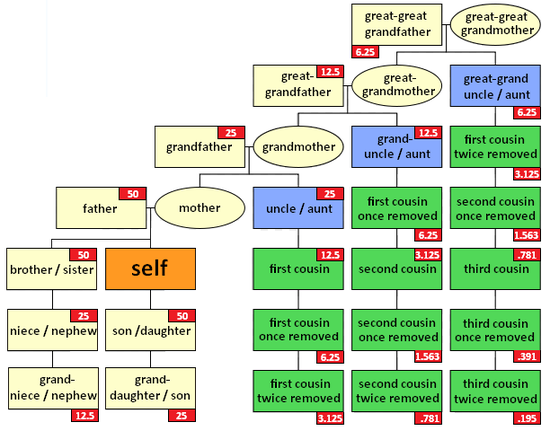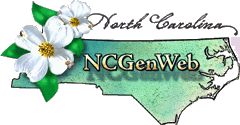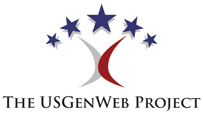This page is for those who are interested in this particular avenue of investigation. This cannot tell you everything you need to know, so links are given to sites with more information on data analysis, etc. This is one area where the more you learn about the techniques of using the data, the more accurate and beneficial the results will be. But keep in mind that this is not a quick-and-easy way to get a family tree. Be willing to share your family tree with others; otherwise, you risk wasting your money.
TESTING SERVICES
-
- Family Tree DNA
— the specialists with the most diverse database; my choice for my projects; they offer yDNA, mtDNA, and atDNA testing; they are the best choice for yDNA or mtDNA testing. - 23andMe
— atDNA testing. results are rounded off, and communication with matches is more difficult - AncestryDNA
— atDNA testing; doesn’t show or let you use your data on the site, and matches may not be where their computer predicts they are; main advantage is the size of their match database, developed through their heavy advertising campaigns; data can be trasferred to FTDNA or GEDmatch to get the considerable benefits of a chromosome browser - My Heritage — another atDNA competitor
- Living DNA — and yet another atDNA competitor
- Family Tree DNA
“DNA testing” is a vague term. There are three main types of DNA testing available for the general public, so you need to know these three types:
-
- yDNA or Y-chromosome DNA testing ~ gives information about the male’s direct patrilineal line (father’s father’s father’s father, etc.); imagine the top line of your father’s pedigree chart going back through the generations. Surnames need to be kept in mind when viewing matches unless there is a reason to think the surname may have changed because of illegitimacy, etc. Females cannot do this test (a female does not inherit her father’s Y-DNA, or she wouldn’t be female), but a female can ask a brother or paternal uncle to do the test if she wants information on her father’s line.
- mtDNA or mitochondrial DNA testing ~ can be done by males or females, because males have mtDNA from their mothers. Imagine the bottom or matrilineal line on a pedigree chart, going back generations. This will give DNA information on your mother’s mother’s mother’s mother, etc. This is not dependable in terms of being helpful in research, because hitting a brick wall on a mother and her surname and ancestry brings you to a halt, and matches are often hundreds of years in the past.
- atDNA or autosomal DNA testing ~ “the new kid on the block.” The analysis of these results is much more complicated than it is for yDNA or mtDNA, so be prepared to put some time and effort into learning how to use the results. There are some resources listed below. Please remember to share your family tree with others; a list of surnames, even with locations, is not anywhere near as helpful, because the time frame and the particular names are essential ingredients in identifying a “common ancestral couple” you share with matches. Also, remember that people make mistakes, and jump to conclusions, so their information may well have errors. My confidence level in someone else’s tree goes down significantly when I realize they have it on Ancestry and have been clicking on little green leaves — that’s a computer talking and not a genealogy expert, and it will be wrong at least part of the time.
Analyzing atDNA results is enhanced by testing more than one family member. The advice is to test at least two siblings and both parents, or at least one parent. The random recombination which occurs at conception means that even full siblings share only about 50% of their atDNA. See this chart for approximate percentages of other relatives:
The important thing you need to ask yourself is how you want to use DNA testing. What are you trying to prove? AtDNA testing is for people wanting to find relatives in recent generations. The timeline on the other two is potentially limitless. The combination of two or more types of DNA testing can solve problems created by NPEs — non-parental events. Read the information on the sites listed below to find out more.
INFORMATION RESOURCES
- The Legal Genealogist — Judy G. Russell often publishes blog articles about DNA research, and they are not in “legalese” – they are easy and fun to read
- The Genetic Genealogist — Blaine Bettinger publishes blog articles about DNA research; he is one of the leading experts in the field
- Your Genetic Genealogist — CeCe Moore is a consultant for 23andMe. I am not a fan of 23andMe, but CeCe’s articles can be very helpful in many aspects
- Kelly Wheaton’s Beginner’s Guide to Genetic Genealogy — Kelly Wheaton, one of the people handling questions on the DNA-Newbies mailing list, has written a series of articles about the use of DNA in genealogy research
- Segmentology — by Jim Bartlett. This has detailed instructions on the way to triangulate matches.
- DNA Explained — by Roberta Estes
- The International Society of Genetic Genealogy
- Megan Smolenyak Smolenyak’s website on “Genetealogy”
- Cyndi’s List ~ Genetics, DNA, & Family Health
- Chromosome Mapping And GEDmatch: An Overview Of What They Are And What The Benefits Are
VIDEO LINKS
How to Maximize Use of Your Data
You can test at 2-3 companies, so you can sample all match databases. I did that with my brother and myself, but I have tested many more relatives through Family Tree DNA. Particularly when working with atDNA, this is very helpful, as it helps you isolate sources for matches. If your mother but not your father matches someone, then you know the match is from her side, etc. Testing known 2nd and 3rd cousins can help you rule out other branches of the family tree.
A service called GEDmatch will accept data from FTDNA, 23andMe, and AncestryDNA for upload. Not everyone uses this service, but it is free (donations are welcome), and some of the tools on the site are quite interesting and helpful. For example, knowing that full siblings share only 50% of their atDNA left me guessing whether some matches who did not match my mother but also didn’t match my paternal uncle were truly from my deceased father’s side. GEDmatch extrapoliated my father’s data from the data for myself and my mother, and that has allowed me to look at those matches with much more confidence.
MAILING LISTS WHICH YOU CAN USE TO LEARN MORE AND ASK QUESTIONS
- DNA-NEWBIE group based at Yahoo
- AUTOSOMAL DNA mailing list at Rootsweb
ADOPTION — FINDING YOUR BIOLOGICAL FAMILY
While I was not adopted, I have a half-sister who was. I do not think it is fair that our society penalizes the innocent child while protecting the privacy of the parents. I am very supportive of adoptees finding their biological families, for whatever reason. Many of us want to know “where we came from,” and I can only imagine the frustration of not knowing the answer to such a basic and instinctive question.
CeCe Moore is very involved in working with adoptees, and there is a special mailing list at Yahoo for adoptees searching for their biological families. You can also see the links below:
- Adoption Group at Family Tree DNA
- Adoption DNA blog article on success stories
- Adoption DNA discussion group at Yahoo
SURNAME PROJECT WEBSITES FOR FAMILIES
WHICH HAD BRANCHES LIVING IN GUILFORD COUNTY
- Benbow Family DNA Surname Project
- Dick/Dicks/Dix Family DNA Surname Project
- The Four Goff Brothers of Western Virginia Website by Phil Goff
- Harrison Family DNA Surname Project
- Johnson/Johnston/Johnstone Surname Project
- Short Family DNA Surname Project
- also see: Discussion of Lineage II (S-17) in Short DNA Study
- Stewart Family DNA Project
If you know about a project involving Guilford families, please e-mail me and I will add it to the list. Family Tree DNA has projects such as Scottish DNA, Ulster Scots, British Quakers, etc., so look for those on their website.




